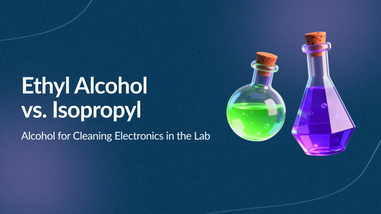- No products in the cart.
What is Acetonitrile
The most distinguishing characteristic of the colorless and toxic acetonitrile liquid is its burning, sweet taste and ether-like smell. Coming from the CH3CN chemical formula, acetonitrile is not for the inexpert individual to handle.
This substance is extremely dangerous and can not only cause severe health problems but also lead to death. Acetonitrile has multiple substitute names and you will also commonly find it as:
- Methyl cyanide
- Acetonitrile cluster
- Methanecarbonitrile
- Ethanenitrile
- Ethyl nitrile
- Cyanomethane
The acetonitrile manufacture develops this by-product but one may also obtain this with vegetation and wood combustion. One of the most important characteristics of the acetonitrile solvent to note is that it is highly polar and volatile.

Flames, sparks and fires can easily ignite this solvent and when this happens, fumes of extremely toxic hydrogen cyanide erupt. Some other characteristics of acetonitrile include:
- It can react with acids, steam or water
- It can dissolve in water
- It produces flammable vapors which can then transform into explosive mixtures with air exposure
Chemical Properties of Acetonitrile
Polarity is one of the most distinguishing properties of acetonitrile. It comes under the classification of polar compound, meaning that some of its atoms can attract electrons. We call this phenomenon electonegativity.
The next most crucial chemical property of this substance is its boiling point. It can reach approximately eighty-two degrees Celsius, which is astonishingly high for a molecule of such a miniature size. It wouldn’t be wrong for us to attribute this exceptional boiling point of acetonitrile to its polarity.
The reason behind this is that longstanding rule the boiling point of a substance goes as high as the polarity of the compound does.
- Linear formula: CH3CN
- CAS Number: 75-05-8
- Molecular Weight: 41.053 g·mol−1
- Appearance: Colorless liquid
- Odor: Faint, distinct, fruity
- Density:776 g/cm3 at 25°C
- Melting point: −46 to −44 °C; −51 to −47 °F; 227 to 229 K
- Boiling point:3 to 82.1 °C; 178.2 to 179.7 °F; 354.4 to 355.2 K
- Solubility in water: Miscible
Top 5 Uses of Acetonitrile
-
Solvent
Acetonitrile is also an essential substance for chemical laboratories that use to detect a variety of materials, including pesticide residues.
-
Extractive Distillation
Acetonitrile is completely miscible in water and can also blend well with carbon tetrachloride, chloroform, acetone, ether, ethanol and even ethylene chloride.
-
Starting materials
- Acetomidine
- Thiamine
- Alpha-naphthyl acetic acid
- Acetophenone
-
Removing solution
You may also use acetonitrile for removing phenols, coloring matters and tars from petroleum hydrocarbons. Acetonitrile and the mentioned elements are not soluble.
5. Laboratory solvent
Laboratories also commonly use acetonitrile as a solvent for crystallizing a wide variety of chemicals. You will also see this substance actively in use HPLC analysis as a solvent.
Some other important uses of acetonitrile include:
- Pharmaceutical solvents
- Perfume manufacture
- In chlorinated solvents as stabilizer
- Refining and extracting copper
- In chromatographic analysis, acetonitrile serves as a high-pressure liquid
- Inorganic salts do well with acetonitrile as a non-aqueous solvent
- A reaction-promoting medium
- Re-crystallizing steroids
- Purifying wool resin
Cautions when Using Acetonitrile
Exposure to acetonitrile can be injurious to health and it usually occurs in the industries that actively engage in using or producing this substance. However, there are also high chances of the general population facing exposure to this chemical by consuming contaminated water, by breathing in the chemical and by eye or skin contact in its liquid or vapor form.
As precaution, one must refrain from staying in the area where acetonitrile is present in the atmosphere and move to a place where there’s fresh air. In case of disrupted breathing, one may need artificial respiration.
In case of skin and eye protection, you must wear PPE, Nitrile Gloves and protective gear when working with acetonitrile. If you still happen to come into contact, you must wash your skin with large amounts of water and soap.
Discard any clothing that has come in contact with this harmful substance.
Where to purchase:
Lab Pro offers a large variety of acetonitrile products. For over 40 years, Lab Pro Inc. has been committed to delivering the highest quality chemicals, distance learning kits, lab supplies, and cleanroom PPE apparel to medical device companies and laboratories worldwide. To learn more, visit the biggest Lab Supply showroom in California, or contact us online or at 888-452-2776.
Sources
https://www.michigan.gov/documents/MDCH_Acetonitrile_fact_sheet_approved_4-19-05_122749_7.pdf
https://mistralhowto.wordpress.com/2012/03/19/what-is-acetonitrile-and-what-is-it-used-for/
https://www.epa.gov/sites/production/files/2016-09/documents/acetonitrile.pdf












































